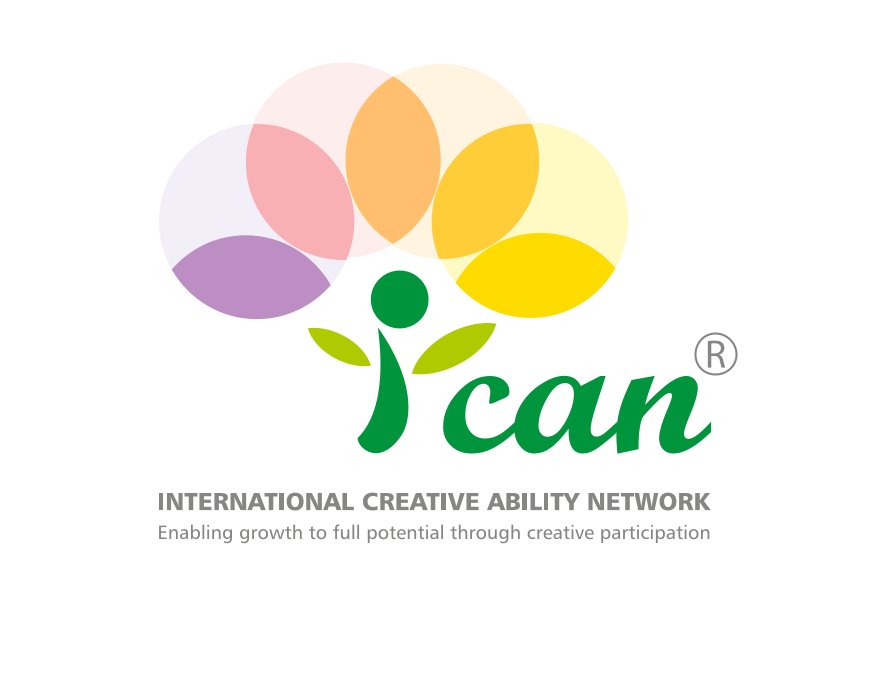Overview of the VdTMoCA and ICAN


The Vona du Toit Model of Creative Ability (VdTMoCA) (Van der Reyden et al. 2019) is an Occupational Therapy practice model originating from the theory of creative ability developed by South African Occupational Therapist, Vona du Toit (du Toit, 1974; du Toit, 2015).
The model's unique contribution to the occupational therapy profession is understanding people in terms of sequential levels of creative ability. The term creative refers to one's ability to change in response to life‘s demands (the creation of oneself), as well as creation of tangible things and solutions to problems. From a developmental perspective, each level of creative ability is comprised of interrelated volition, motivation and action (behaviours, skills, performance). Identifying and understanding a person's level of creative ability enables therapists to understand and provide therapeutic intervention for people of all degrees of volition, motivation and ability (Van der Reyden et al. 2019). Such knowledge can also guide intervention by other disciplines, family, carers and health and social care support staff (Van der Reyden & Sherwood, 2019; Jeffries, 2021).
The VdTMoCA is client-centred, ability and recovery focused. Occupational Therapy is offered to match what the person has volition, motivation and ability for, but which also poses a challenge, mastery of which has the potential to result in growth in volition, motivation and ability. The individual's experience of having his/her motivation (needs) met, and experiencing ability to do activities of daily living, both motivates and enables him/her to engage. Through engagement, behaviour and skills are developed towards the next level. Equally, the model informs intervention to maintain and/or prevent decline in ability, e.g. when improvement and growth into higher levels is not possible, or a person has a progressive condition such as dementia.
The model provides a detailed guide to the selection, structuring and presentation of intervention (Casteleijn & Holsten, 2019). This includes the use of activity, activity groups and differing situations as the core of Occupational Therapy treatment, but informs all interactions with the individual, including how to approach him/her, structure self-care intervention, and how to develop a meaningful routine that attends to all aspects of daily living including use of free time (leisure). Therefore, this model has effectively enabled a multidisciplinary approach (Murphy, 2021; Quan & Zywicka-Rospond, 2017), including family and carers in the design and delivery of care plans according to the person's level (Schon et al. 2017). This supports individuals to meet their potential.
The model provides a means of measuring increase and decrease in motivation and ability, including the Creative Participation Assessment form (Van der Reyden & Sherwood, 2019) and the Activity Participation Outcome Measure (Casteleijn, 2010, 2012a, 2012b). The latter is available to Occupational Therapists with depth of knowledge and experience of assessing creative ability.
The VdTMoCA is of particular interest to mental health and learning disabilities practice, but is applicable to any service including working with people in wellness (Joubert, 2021) and for staff development (Wilson & Casteleijn, 2017; Zywicka-Rospond & Khatri, 2015). The model is purported to be effective for all diagnoses and severity of illness/problems (Van der Reyden & Sherwood, 2019). For example, in relation to mental health clients, clients perceived as unresponsive and difficult to engage can receive therapeutic intervention from day one rather than waiting for clients 'to get a bit better‘ in response to medication whilst potentially being deemed as 'not ready‘ or 'unsuitable for OT‘. Through this model, therapists may realise that it is not that clients are unsuitable for Occupational Therapy, but that the occupational therapy traditionally offered, may not have been suitable for these clients. Therapists realise that they are able to work therapeutically with these and all clients (all levels of creative ability).
For Occupational Therapists, the model brings together all the core aspects of Occupational Therapy practice (activity analysis, grading, purposeful activity, activity groups, therapeutic use of self and the non-human environment), enabling occupational therapists to be occupational therapists through the application of activity as a powerful therapeutic tool.
The International Creative Ability Network
Dr Wendy Sherwood Dip COT, MSc, PhD has 33 years of experience as an Occupational Therapist. Wendy is recognised nationally and internationally as an expert in the Vona du Toit Model of Creative Ability, and sits on the Executive Committee of the Vona & Marie du Toit Foundation, South Africa.
Wendy founded the Model of Creative Ability Interest Group (MCAIG) in 2005, which led onto setting up a Foundation Community Interest Company in 2012, and the delivery of the first international VdTMoCA conference in 2009 (followed by a further 6 conferences). Wendy is a contributing author and co-editor of the first full text on the VdTMoCA (see Van der Reyden, Casteleijn, Sherwood & De Witt, 2019), and co-authored and edited two texts on the application of the model in acute mental health and learning disabilities/intellectual impairment services. Wendy also co-authored a chapter on the VdTMoCA for a major new book on OT theory (see publication list below - Sherwood & Janse van Rensburg, 2025).
Wendy is the editor and contributing author of the only text to provide detailed information and case examples on the application of the VdTMoCA to address the physical, mental and spiritual health and well-being of individuals in a broad range of contexts - Perspectives on the Vona du Toit Model of Creative Ability: practice, theory and philosophy is now in its 2nd edition (Sherwood, 2024). Available from this site.
Wendy provides training and CPD initiatives for Occupational Therapists, support staff and Multi-disciplinary teams nationally and internationally. A broad range of initiatives are provided to enable newcomers to the VdTMoCA to gain confidence in applying basic knowledge to practice, and for more experienced practitioners to gain advanced knowledge and skills for challenging aspects of practice. See the training information on this site and visit www.patreon.com/icancreativity
Researchers - please feel free to conatct wendy@ican-uk.com to discuss research ideas or request Dr Sherwood's participation in research teams to ensure accuracy of understanding of the VdTMoCA.
Lecturers - contact wendy@ican-uk.com for teaching resources.
Students - invite Dr Wendy Sherwood to speak at your OT Society wendy@ican-uk.com
Publications
Casteleijn D, Sherwood W, Coulson K (2025) Exploring the Vona du Toit Model of Creative Ability: Applications, Strengths, and Weaknesses in Occupational Therapy – A Systematic Mapping Review. South African Journal of Occupational Therapy, Vol 55, No. 3. https://journals.assaf.org.za/index.php/sajot/article/view/22873
Sherwood W, Janse van Rensburg E (2025) The Vona du Toit Model of Creative Ability. In M Ikiugu, SD Taff, S Kantartzis, N Pollard (2025) (Eds). Routledge Companion to Occupational Therapy Theories, Concepts and Models. London: Routledge, Taylor Francis Group.
Sherwood W (2024) (Ed.) Perspectives on the Vona du Toit Model of Creative Ability: practice, theory and philosophy. Watford, International Creative Ability Network. (see Books page) Sherwood W (2021) Theory and philosophy - it’s personal, In: W Sherwood (2024), (Ed.) Perspectives on the Vona du Toit Model of Creative Ability: practice, theory and philosophy. 2nd edition. Watford, International Creative Ability Network. (see Books tab)
De Witt, P, Sherwood W (2019) Assessment of creative ability. In D Van der Reyden, D Casteleijn, W Sherwood, P De Witt, 2019 (Eds.) The Vona du Toit Model of Creative Ability: Origins, Constructs, Principles and Application in Occupational Therapy. Chp 5, pp148- 199. Vona & Marie du Toit Foundation, Pretoria, South Africa.
Sherwood W (2017) (Ed.) The Vona du Toit Model of Creative Ability: a practical guide to occupational therapy for people with learning disabilities. Out of print. [for up-to-date practice, see Sherwood (2024)]
Sherwood W (2017) Services for people with learning disabilities: the role of occupational therapy, In: W Sherwood (Ed.) (2017) The Vona du Toit Model of Creative Ability: a practical guide to occupational therapy for people with learning disabilities. Out of print. [for up-to-date practice, see Sherwood (2024)]
Sherwood W (2017) Moving forward, In: W Sherwood (Ed.) (2017) The Vona du Toit Model of Creative Ability: a practical guide to occupational therapy for people with learning disabilities. Out of print. [for up-to-date practice, see Sherwood (2024)]
Sherwood W, Schon J (2017) Defining parameters, In: W Sherwood (Ed.) (2017) The Vona du Toit Model of Creative Ability: a practical guide to occupational therapy for people with learning disabilities. Out of print. [for up-to-date practice, see Sherwood (2024)]
Sherwood W, Schon J (2017) Perspectives for practice, In: W Sherwood (Ed.) (2017) The Vona du Toit Model of Creative Ability: a practical guide to occupational therapy for people with learning disabilities. Out of print. [for up-to-date practice, see Sherwood (2024)]
Sherwood W, Robertson G, Wilson R, Hooper F, Walsh Z (2017) A VdTMoCA informed occupational therapy process, In: W Sherwood (Ed.) (2017) The Vona du Toit Model of Creative Ability: a practical guide to occupational therapy for people with learning disabilities. Out of print. [for up-to-date practice, see Sherwood (2024)]
Sherwood W, White B, Wilson S (2015) (Eds.) The Vona du Toit Model of Creative Ability: a practical guide for acute mental health occupational therapy practice. Out of print. [for up-to-date practice, see Sherwood (2024)]
Van der Reyden D, Casteleijn D, Sherwood W, de Witt P (2019) (Eds.) The Vona du Toit Model of Creative Ability: Origins, Constructs, Principles and Application in Occupational Therapy. Vona & Marie du Toit Foundation, Pretoria, South Africa.
Van der Reyden, D, Sherwood, W (2019) The Vona du Toit Model of Creative Ability core constructs and concepts, IN Van der Reyden D, Casteleijn D, Sherwood W, de Witt P (2019) (Eds.) The Vona du Toit Model of Creative Ability: Origins, Constructs, Principles and Application in Occupational Therapy. Vona & Marie du Toit Foundation, Pretoria, South Africa. Chp 3, pp. 58-104.
Research
Sherwood W (2005) A study to explore the methods and processes of the model of creative ability assessment applied by occupational therapists in in-patient mental health and forensic settings in South Africa.Unpublished Masters dissertation, University of Greenwich.
Sherwood W (2016) An investigation into the theoretical construction of effort and maximum effort as a contribution to the Theory of Creative Ability. PhD Thesis. University of the Witwatersrand, Johannesburg. Retrieved from http://wiredspace.wits.ac.za/handle/10539/21261
Casteleijn D, Sherwood W, Coulson K (2025) Exploring the Vona du Toit Model of Creative Ability: Applications, Strengths, and Weaknesses in Occupational Therapy – A Systematic Mapping Review. South African Journal of Occupational Therapy, Vol 55, No. 3. https://journals.assaf.org.za/index.php/sajot/article/view/22873